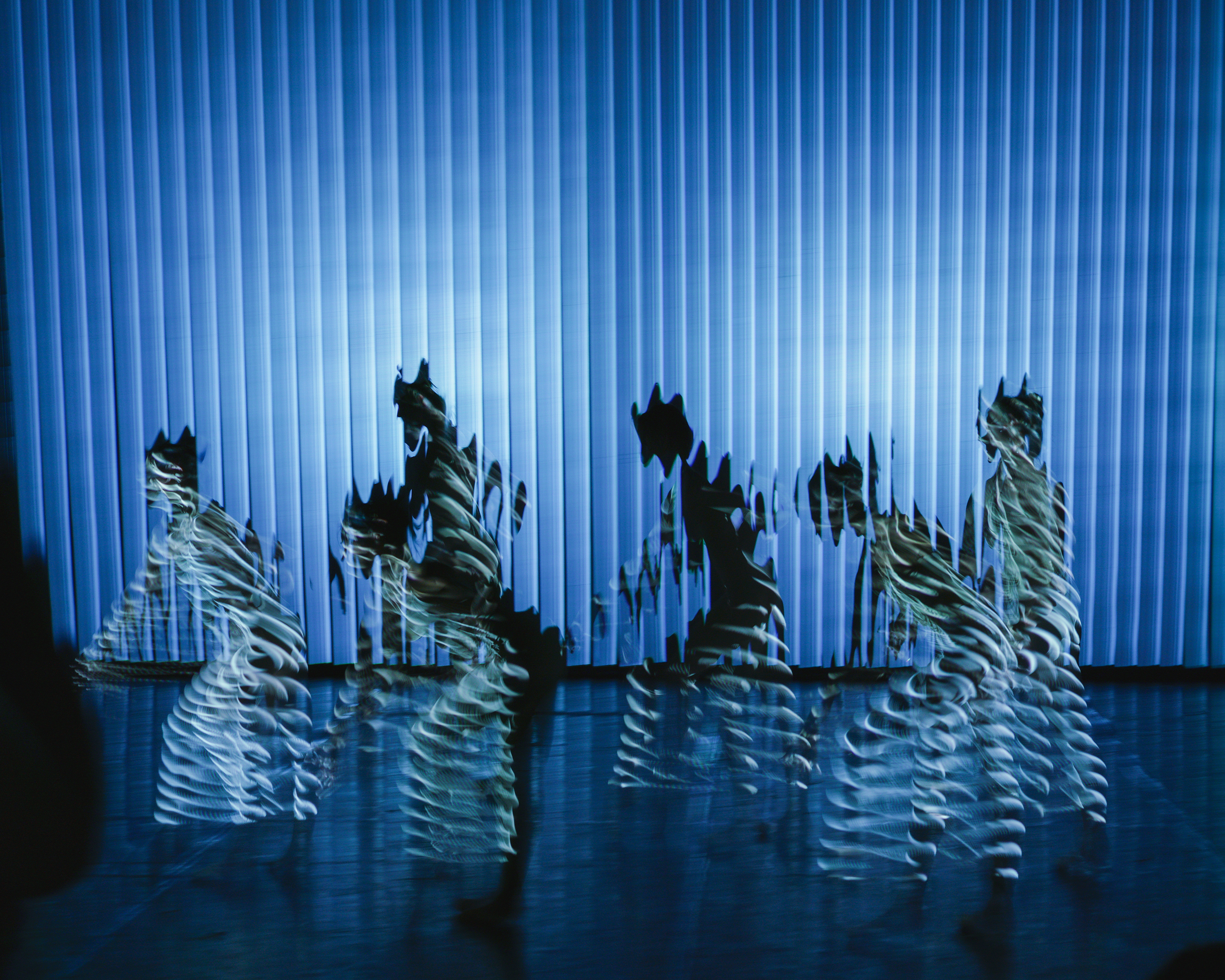
Artists of the Ballet in rehearsal for Frame By Frame. (Photo: David Leclerc)
If you don’t know the name Norman McLaren, you will, and soon, thanks to a new production happening at the National Ballet of Canada. The UK-born, Canada-based animation innovator, who won an Oscar for his 1952 anti-war film Neighbours, was one of the most important and influential figures in the history of film. It has been rightly been noted that McLaren (who passed away in 1987) “extend(ed) the boundaries of creative animation” through his unique and highly experimental approach. His 82 works (along with 52 test films) were added to the UNESCO heritage collection in 2009, and his name is slowly coming to be recognized more widely outside of experimental cinema circles. It’s been keenly observed that “without him, (Canada) would be lighter an Academy Award or two, and likely much more.”
The title of the National Ballet of Canada’s new work, Frame By Frame, set to premiere at Toronto’s Four Seasons Centre this coming Friday (June 1st), references McLaren’s painstaking method of drawing on film stock, frame by meticulous frame, and of his work with stop-motion animation sequencing. Each animated frame had a slight differentiation (being done by human hands, after all), which resulted in a charmingly wobbly end effect when viewing.
Canadians of a certain generation will remember, with glee, McLaren’s exuberant creations, having been exposed to them regularly in school and on television. They were an inescapable part of growing up in Canada, like so many animated works that came from the beloved National Film Board (NFB). I loved the wiggly lines (the so-called “boiling” effect in action) and the zealous embrace of surreal imagery that characterized so much of McLaren’s work; it forced you to think and feel at once, a new experience for small children more used to fantastical diversion and reaction-inducing entertainment. The jolly headless hen from “Hen Hop” forever makes me smile, even as it makes me think carefully about what’s on my dinner plate (to say nothing of reminders of the horror-meets-macabre-humor of my mother’s childhood farm stories, which I will leave to reader imagination). McLaren’s works were so unlike the Disney ones I’d see in cinemas as a child, more free and fun and loopy. Many also had strong social messages, like 1952’s “Neighbours“, a nine-minute film that uses pixilation to tell the story of two people who fight over a single flower; it garnered much praise and admiration, from artists like Pablo Picasso as well as the Academy of Motion Picture Arts And Sciences. He also worked with a host of famous music figures, including Glenn Gould, Ravi Shankar, Pete Seeger, and Oscar Peterson (the latter being featured in Frame By Frame), and his “Pas de Deux“, “Adagio“, and “Narcissus” are among the most beautiful dance films ever made. The animator met his life partner, Guy Glover, at a ballet performance in London, and his fascination with both music and art permeates his creations, whether they are music/dance specific or not. McLaren firmly believed that when it came to film, “how it moved was more important than what moved.”
\Norman McLaren working on “Hen Hop” in 1942. (Photo: BFI)It is understandable, then, that one sees within McLaren the unmistakable qualities which are so suited to a stage transfer of his life and works. Choreographer Guillaume Côté (who is Associate Choreographer at the National Ballet of Canada and a longtime beloved artist there) and celebrated director Robert Lepage drew inspiration from McLaren’s works — their rhythms, their energies, their winking, sometimes-whimsical, sometimes-pensive spirits — in creating Frame By Frame. Along with a host of celebrated theatre productions and work for Cirque du Soleil, Lepage has also leant his talents to classical music arts; his opera productions have been staged at the Canadian Opera Company, Opéra National de Paris, and the Metropolitan Opera in New York. In creating Frame By Frame, his first work with the National Ballet of Canada, Lepage recently said that “(c)lassical ballet is a wonderful craft, and I respect it a lot. It’s just that it also needs to be reinvented in a certain way if we want the craft to survive.”

Robert Lepage and Guillaume Cote in rehearsal for Frame By Frame. (Photo: Elias Djemil-Matassov)
The production is a collaboration between the National Ballet of Canada, the National Film Board of Canada, and Ex Machina, Lepage’s production company in Québec City. It is a project several years in the making, and will reportedly make full use of a range of multidisciplinary technologies, including live projections and camera work. The Québecois director has said he wanted to create a “digital homage” to McLaren’s analogue world, and Friday night, audiences will see for themselves the fruits of these labours, with the animator’s work being brought to life in a whole new way.
\Jack Bertinshaw in rehearsal for Frame By Frame. (Photo: Elias Djemil-Matassov)National Ballet Second Soloist Jack Bertinshaw will be performing the role of Norman McLaren in Frame By Frame. The Australian-born dancer has been in a range of works for the company since joining in 2011, including a sprightly performance as Uncle Nikolai in seasonal presentations of The Nutcracker, Mitch in A Streetcar Named Desire, Benno in Swan Lake, and the title role in Pinocchio. I was curious to ask him what it was like to work around the level of technology LePage is utilizing, his experience as an Australian in discovering the works of a Canadian icon, and the various joys and challenges of capturing life, art, and animation through movement.
What’s it like to embody a real person? It seems like a rather unique opportunity within the ballet world.
I’ve done quite a bit of reading and obviously Robert and his team have done a lot of extensive research. With each scene we talk through each concept and what their aim is and what it should be acted as, and portrayed as. They wanted to make sure I had enough of myself in it too. While I’m being Norman and staying as true to that as the kind of fun-loving guy he was, he was also around this this close-knit group of friends —we touch on that. I wouldn’t say it’s difficult, but you’re right, most of time it’s a character like the Mad Hatter, you don’t get to go through a life from beginning to end very often. We do things like Nijinsky and it’s a portrayal, but it’s rare. Certainly this sort of a part is new for me.

Artists of the Ballet in rehearsal for Frame By Frame. (Photo: David Leclerc)
Have you ever worked on show with this level of technology?
Not this much. My background is in jazz and tap, I came from one of those schools who’d do their yearly shows that were as high-tech as possible, with cool lighting and such — but not anywhere near this level of high-tech projection. (In Frame by Frame) it comes from everywhere — above, front… I’m holding a camera at one point that works. It’s really amazing.
Does the technology make it easier or harder to perform in?
It depends — if anything, it’s easier and harder. Something Guillaume and I have had to figure out, mostly, is how we can best enhance this technology; we can’t fight against it. We have to be clear on the certain themes we’re dancing as there’s a camera from above on us, and that’s being projected onto the back screen so the audience in general will be looking at the above aspect — we can’t fight against that. It’s been a learning process over three years now, and it’s been really unique. This is the first time for dancers that we’ve been in the process from the get-go, from the round-table of, ‘let’s create a ballet.’ We normally get to the process where the choreography arrives, and they’ve got things in order, with storyline and sets and costumes/designs somewhat figured out. This is the first time where we’d go to Quebec for a week or two in the summer and we would be with Ex Machina, at their building with all their equipment, and we’d workshop. We played with so many different types of technology there — what works, what doesn’t work.
And LePage was open to all of it?
It was his idea! He has the studio and the technology to do all of this on the regular, for his works with his team.
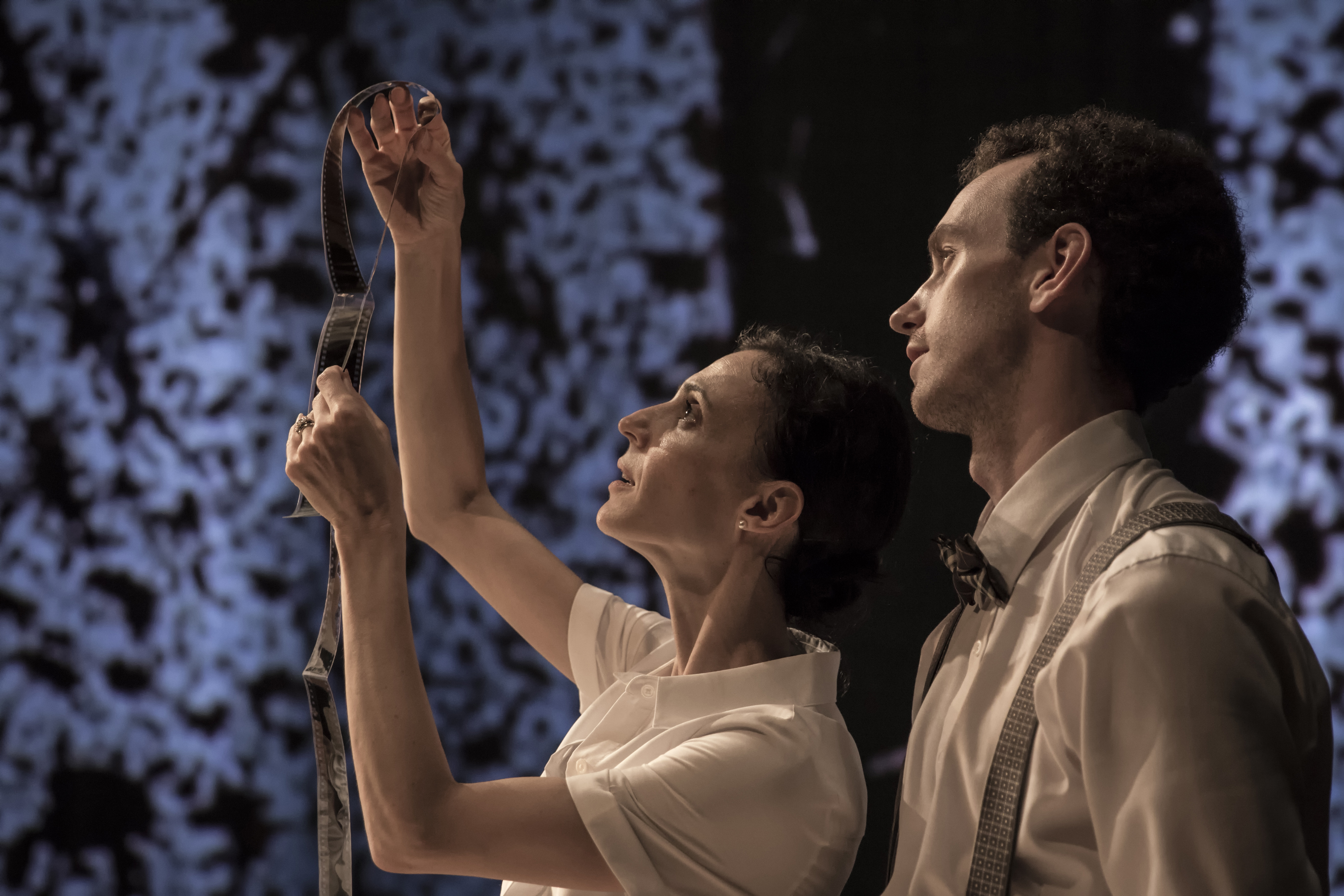
Greta Hodgkinson and Jack Bertinshaw in rehearsal for Frame By Frame. (Photo: Elias Djemil-Matassov)
What’s this kind of collaborative creation been like?
Inspiring! Working with Robert LePage and his team has been incredible. It’s like nothing we’ve ever done. It’s going to be so different — that’s one thing we’re interested to see: how Toronto audiences perceive it, how they take these ideas. It’s a lot of fun in a lot of scenes — a lot of Norman’s works were fun and funky, with odd humor and quirkiness, so we’ve made sure that’s a good part of it while also maintaining enough of Norman’s life throughout.
There will be audiences who either know McLaren’s work very well, or don’t know his stuff at all but love the ballet. What do you think they’ll come away with?
The show is so versatile, I think audiences who don’t know anything about him will still certainly come away with quite a lot. We sometimes portray exactly the work and sometimes we recreate it, like with “A Chairy Tale” — we’ve studied that video, and we do every single chair move and have black light going. We’ve tried to do the exact replications and bring (his works) to life so people who know it will appreciate it, and people who don’t, it’ll be like the first time watching his work.
So capturing the spirit of his work.
Yes, a lot.
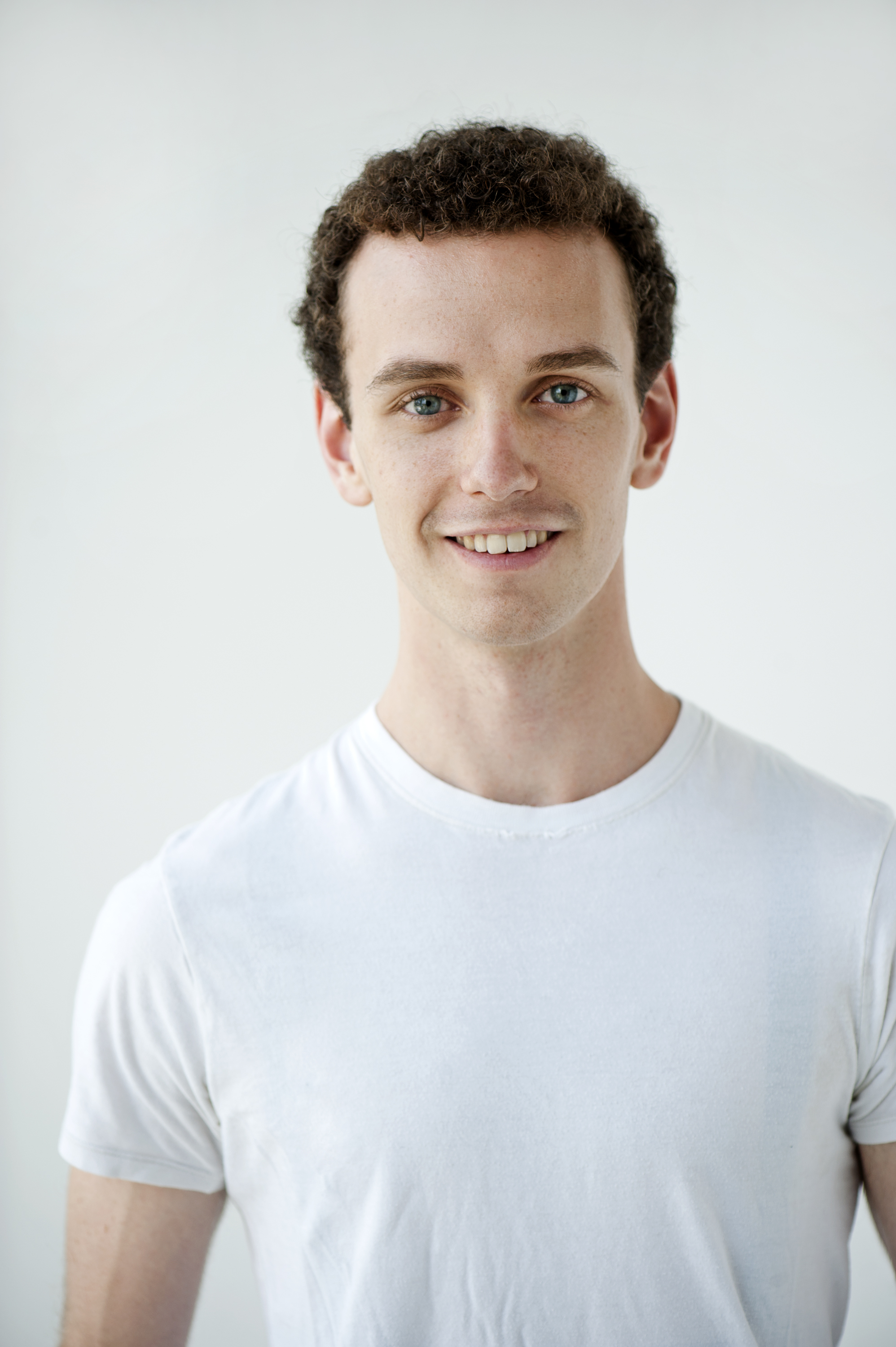
Jack Bertinshaw (Photo: Sian Richards)
Guillaume has said that “everything that’s put on stage nowadays should be multidisciplinary, in a way.” Do you think there should there be a multidisciplinary Sleeping Beauty or Swan Lake? Using contemporary technology in producing traditional works is a big issue in the opera world also.
I certainly believe we should respect and honor the old original works. Sleeping Beauty and Swan Lake today, I believe, are the most beautiful how they were originally created, but when you’re creating something new that’s never been done before… it’s why multidisciplinary is a bigger thing. Today we’re so exposed to new technology anyway, but there’s still a crowd that loves that original stuff.
Introducing anything new means risking people getting angry…
Nijinsky was one of the first originators of conceptual dancing and they threw tomatoes at him!
Once the shock of the new fades, it’s been suggested it then becomes the new norm. Some productions have to fight against history, but with this it seems like you’re less fighting it than celebrating it. What’s it been like to learn about these works?
Being Australian, I’m wasn’t aware of McLaren or his movies, but my mother is, oddly enough — she’s in film and television PR, so she’s a lot more in that world. She’d heard of him, and my uncle in London, he’s a cameraman for film, he knew his work also. My mum’s company and circle of friends heard about Frame by Frame and were like, “Wow, Norman McLaren!” Meanwhile I’d never heard of him before three years ago. I’ve done a lot of research and found out a lot more. We’re not making our own version of things; we’re honoring his works as truly as we can.



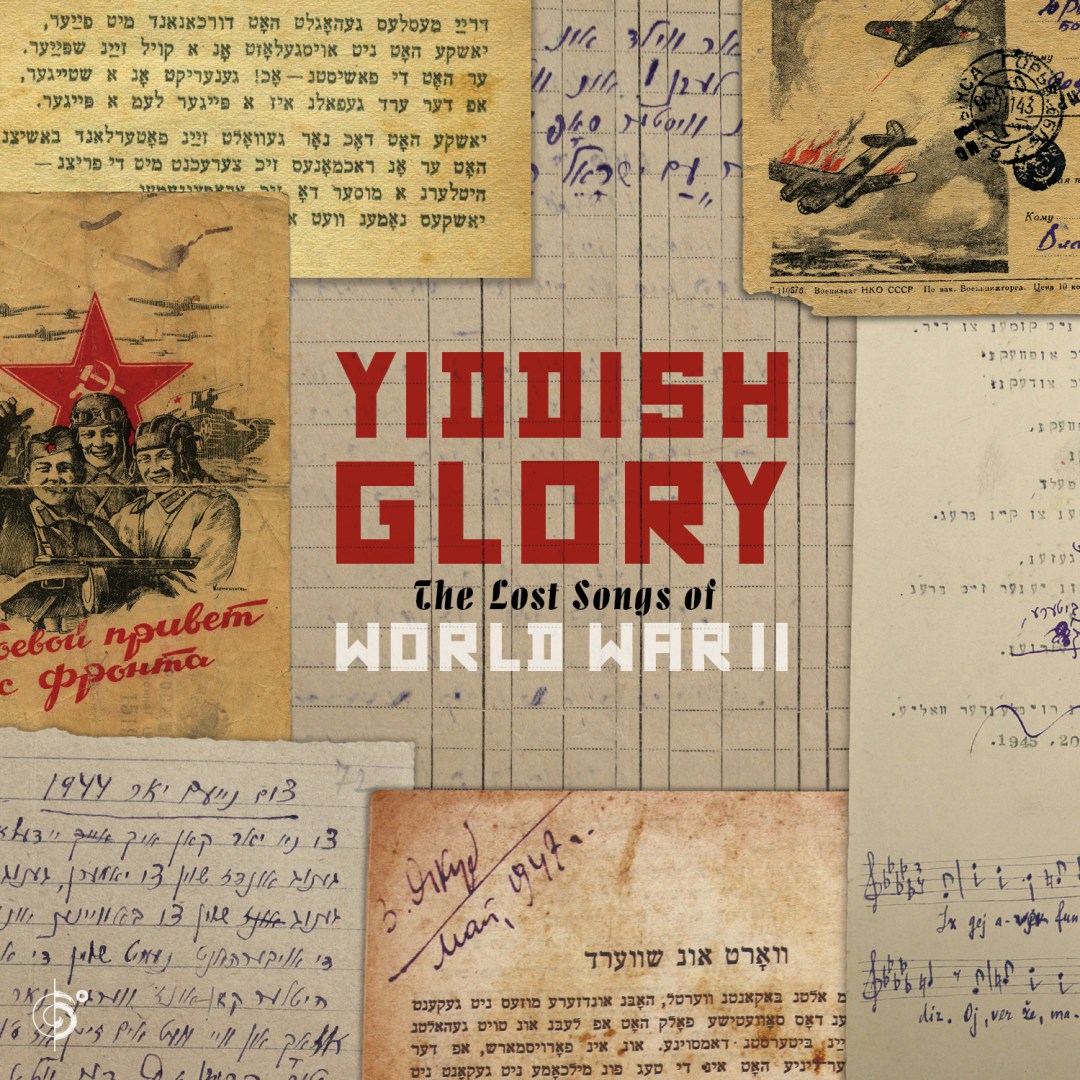
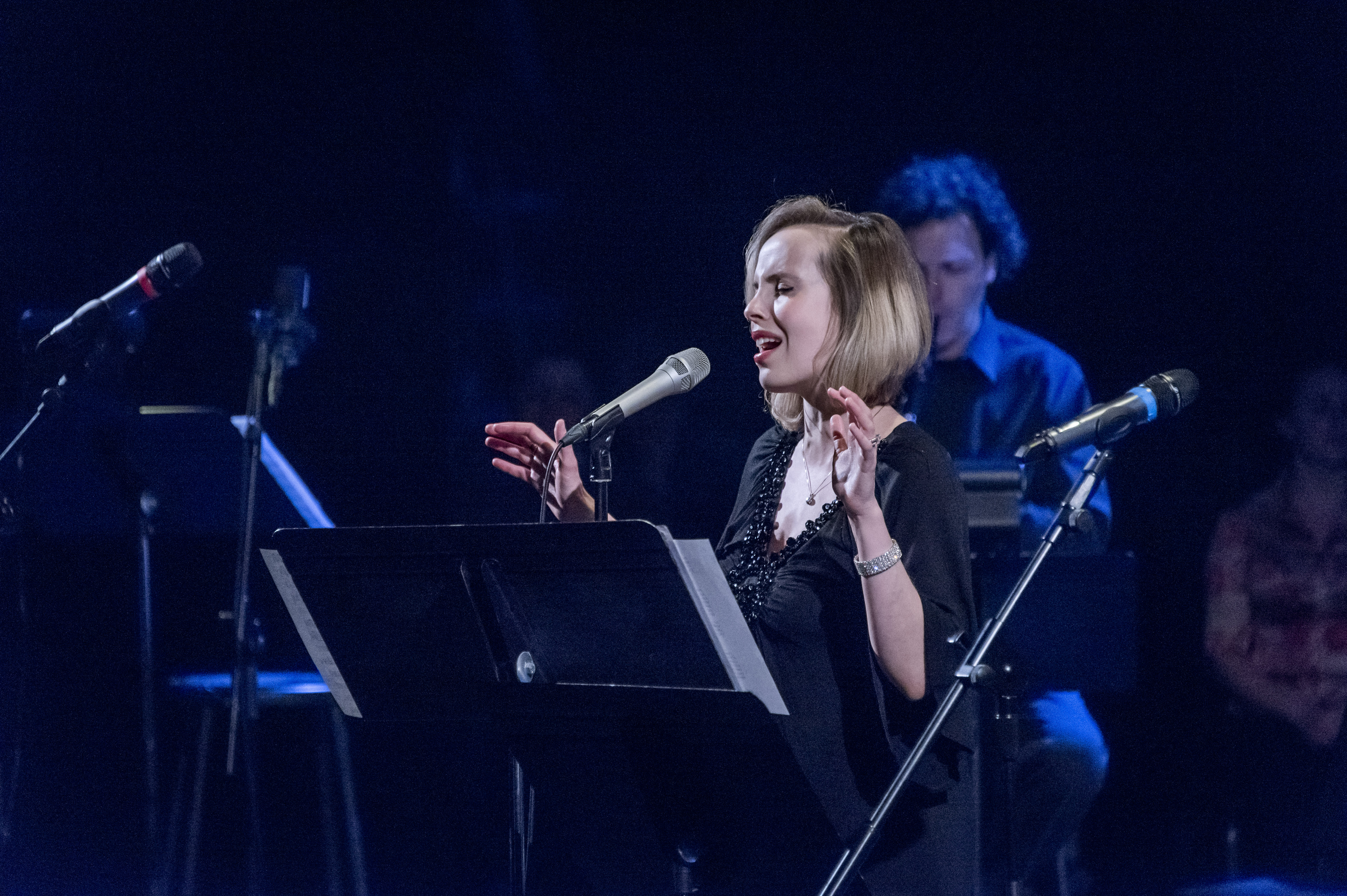


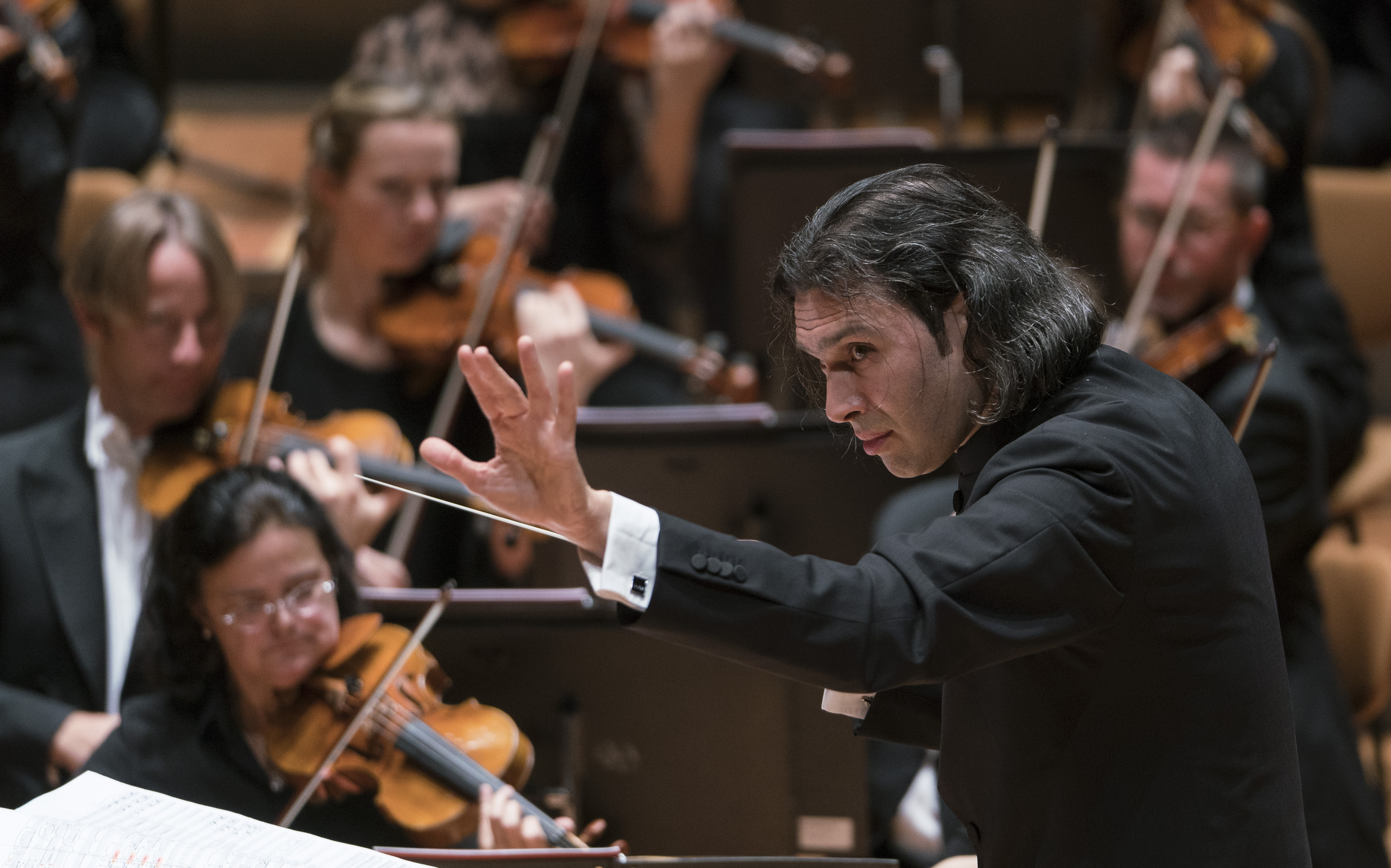



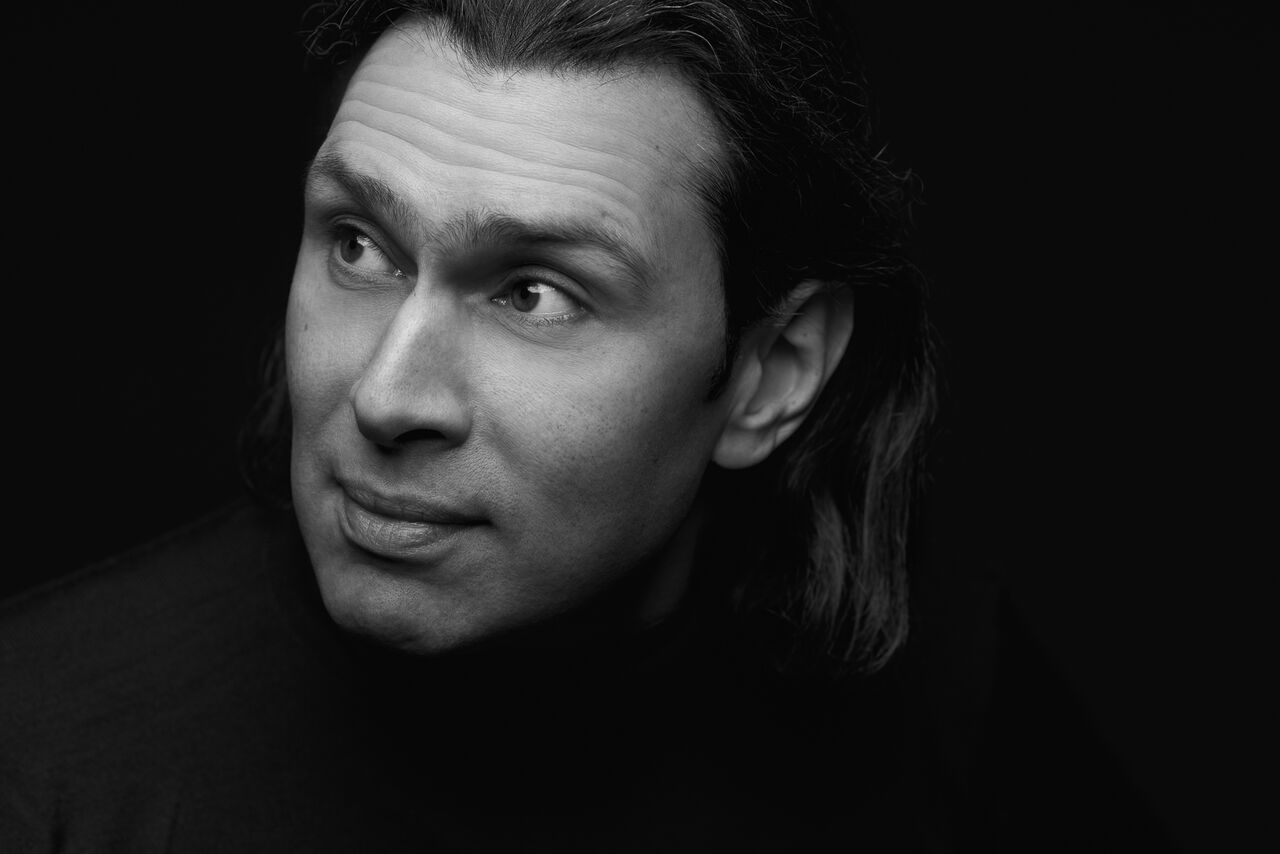
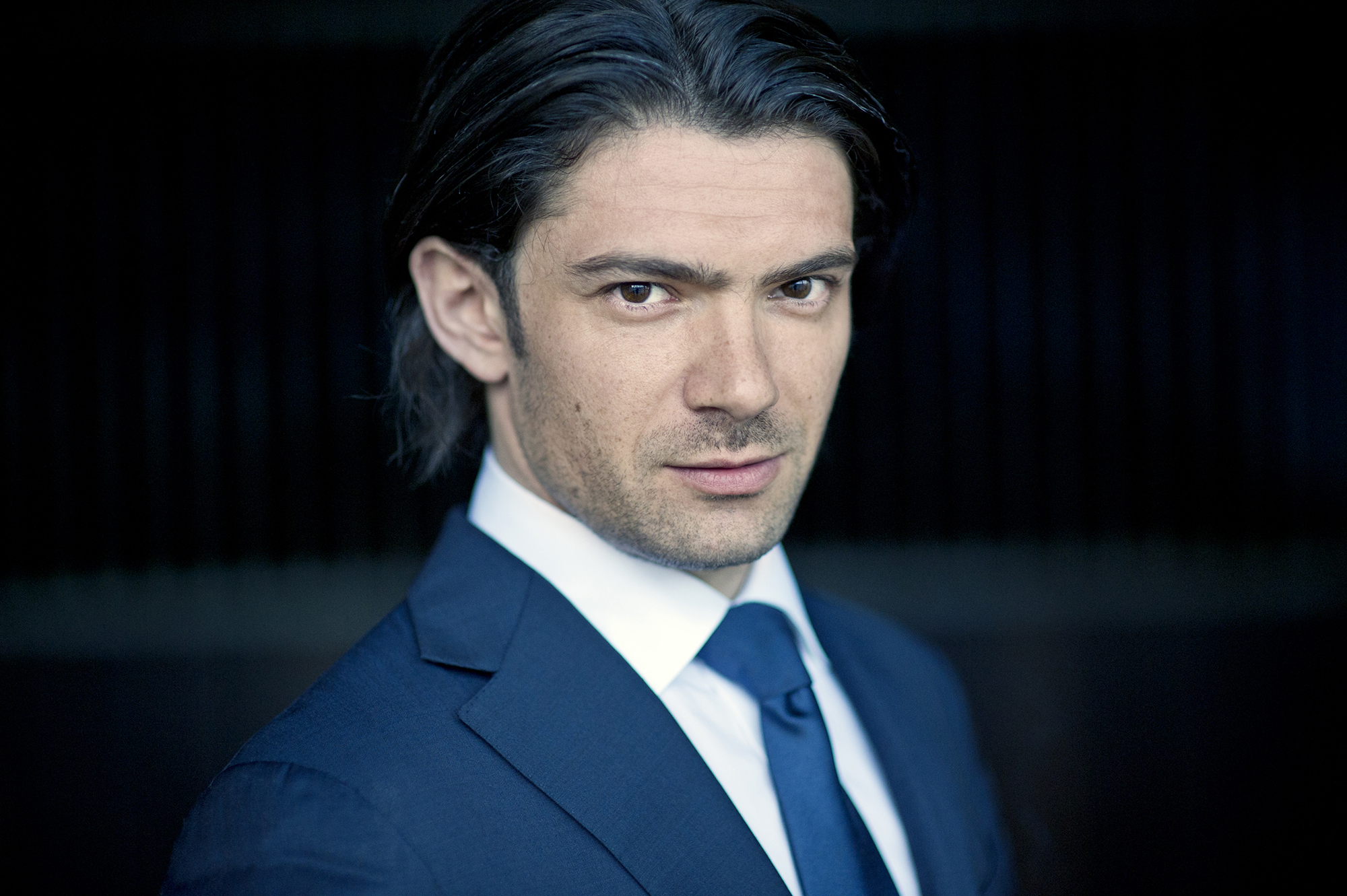
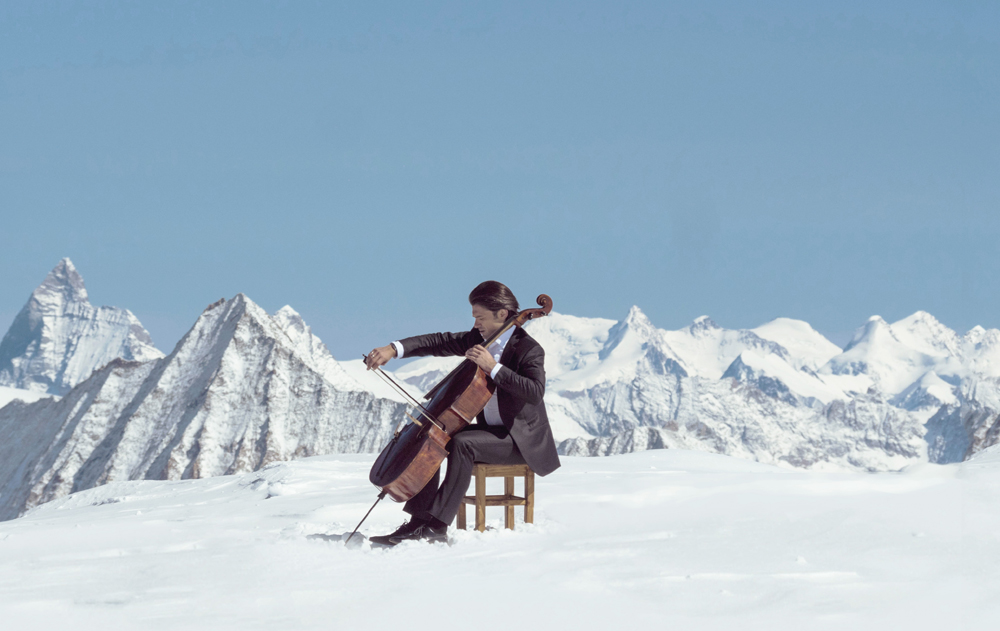
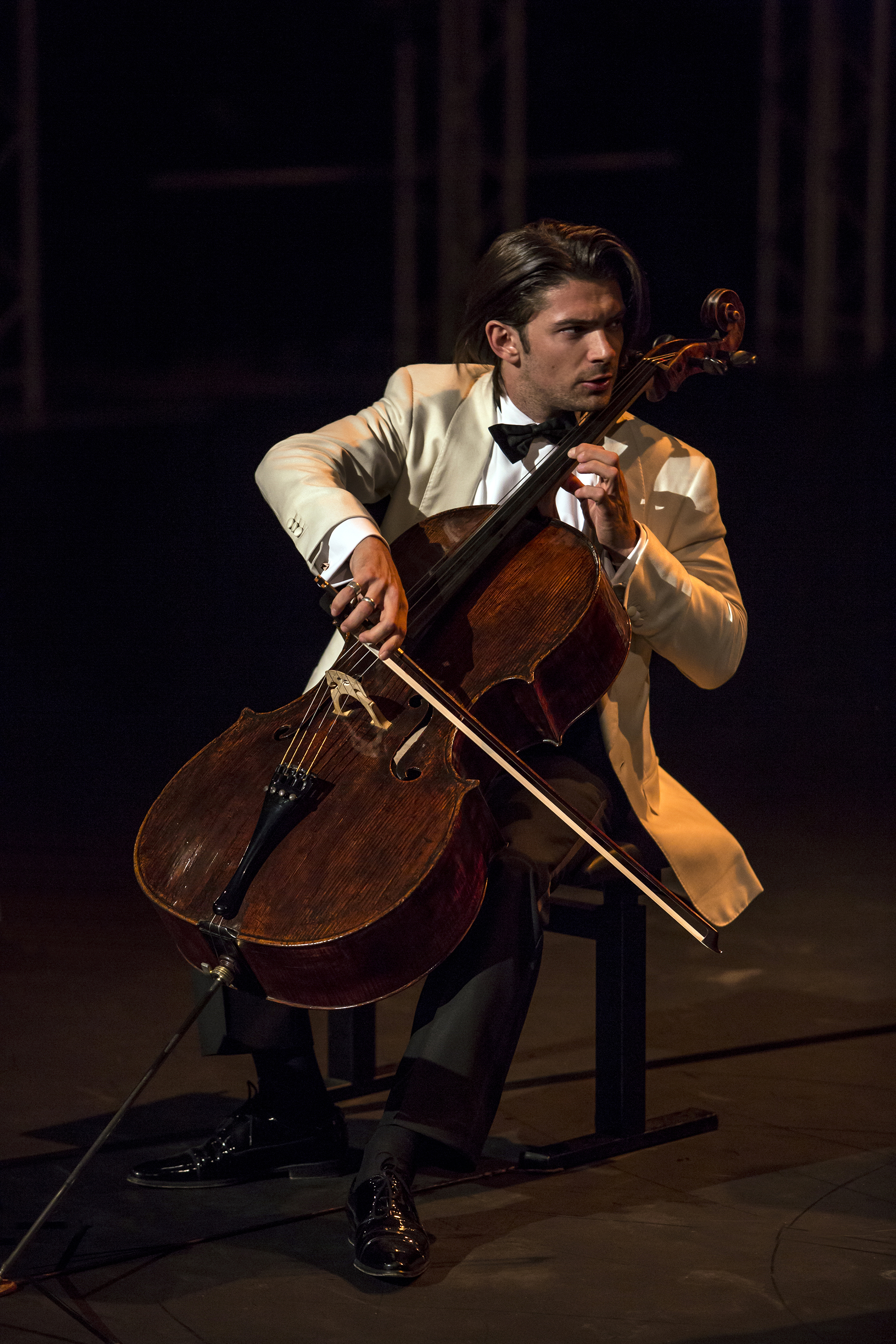
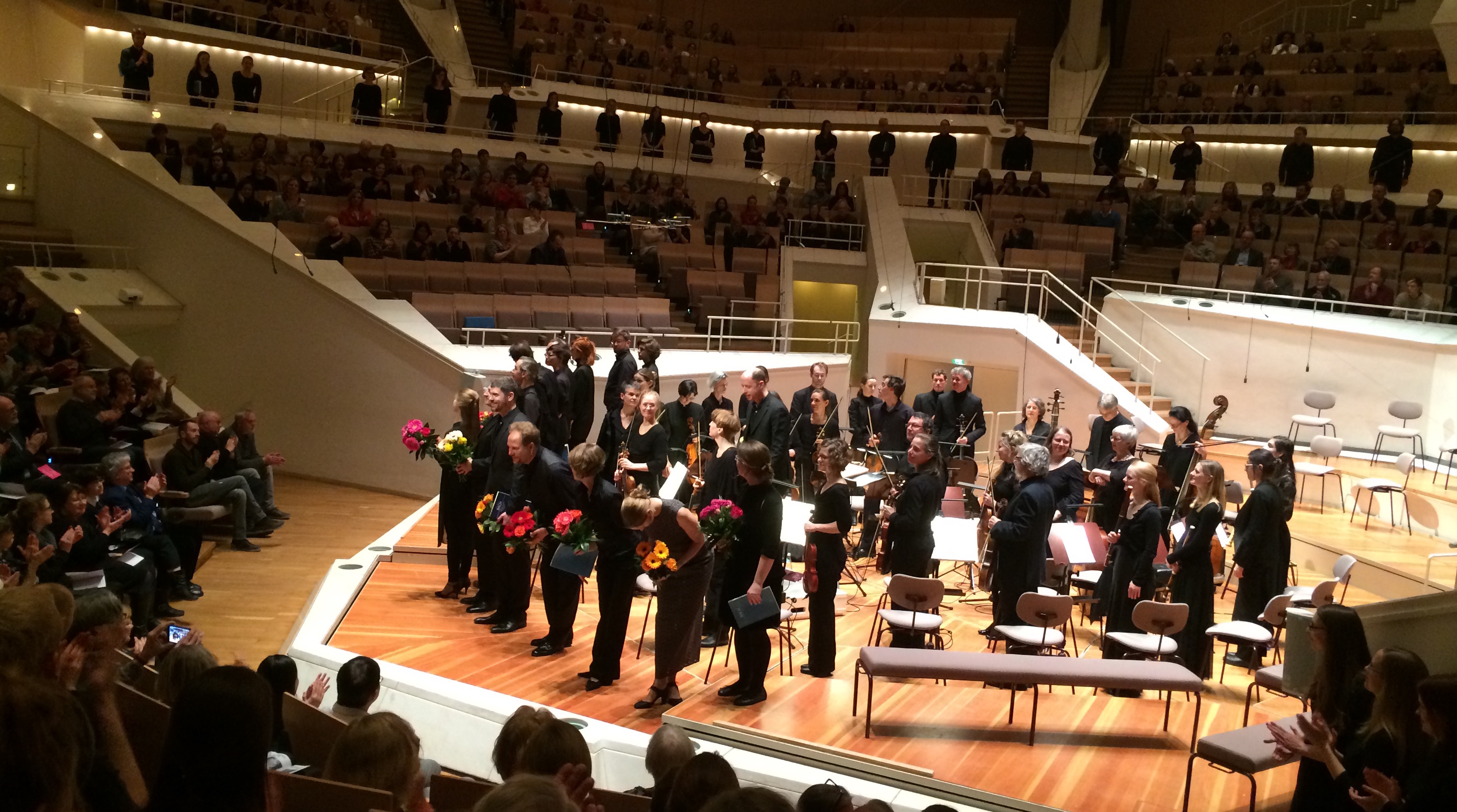

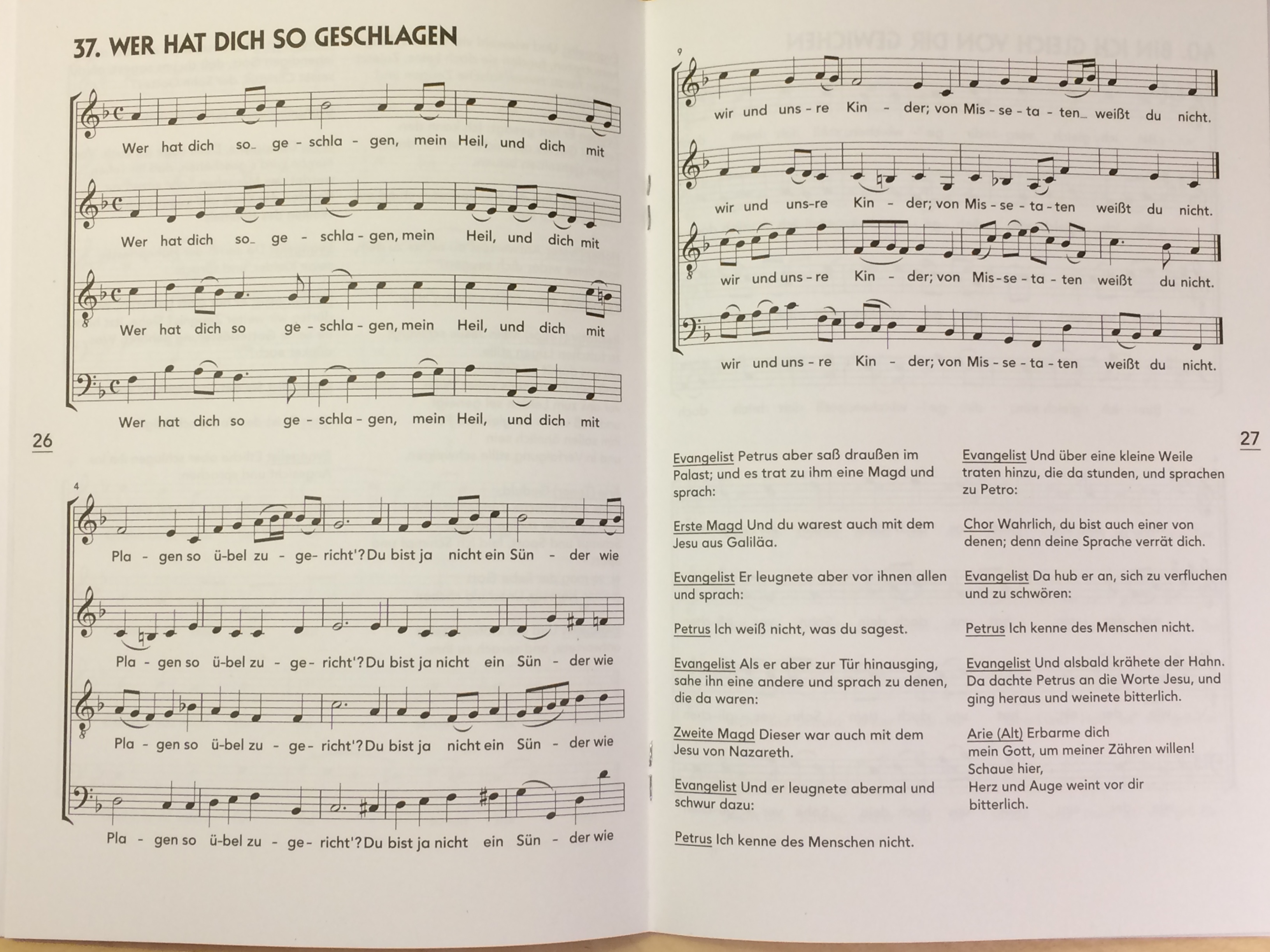


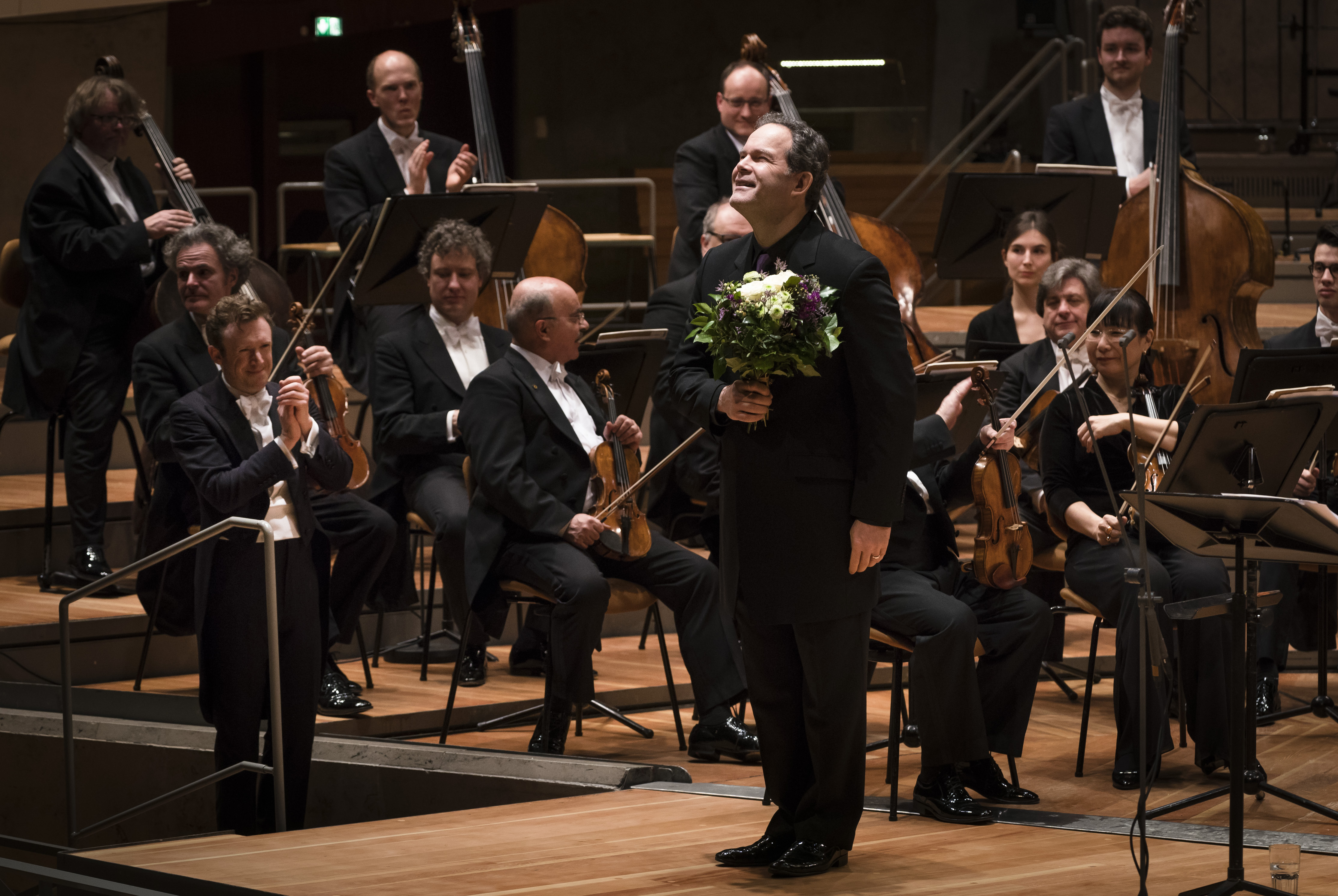
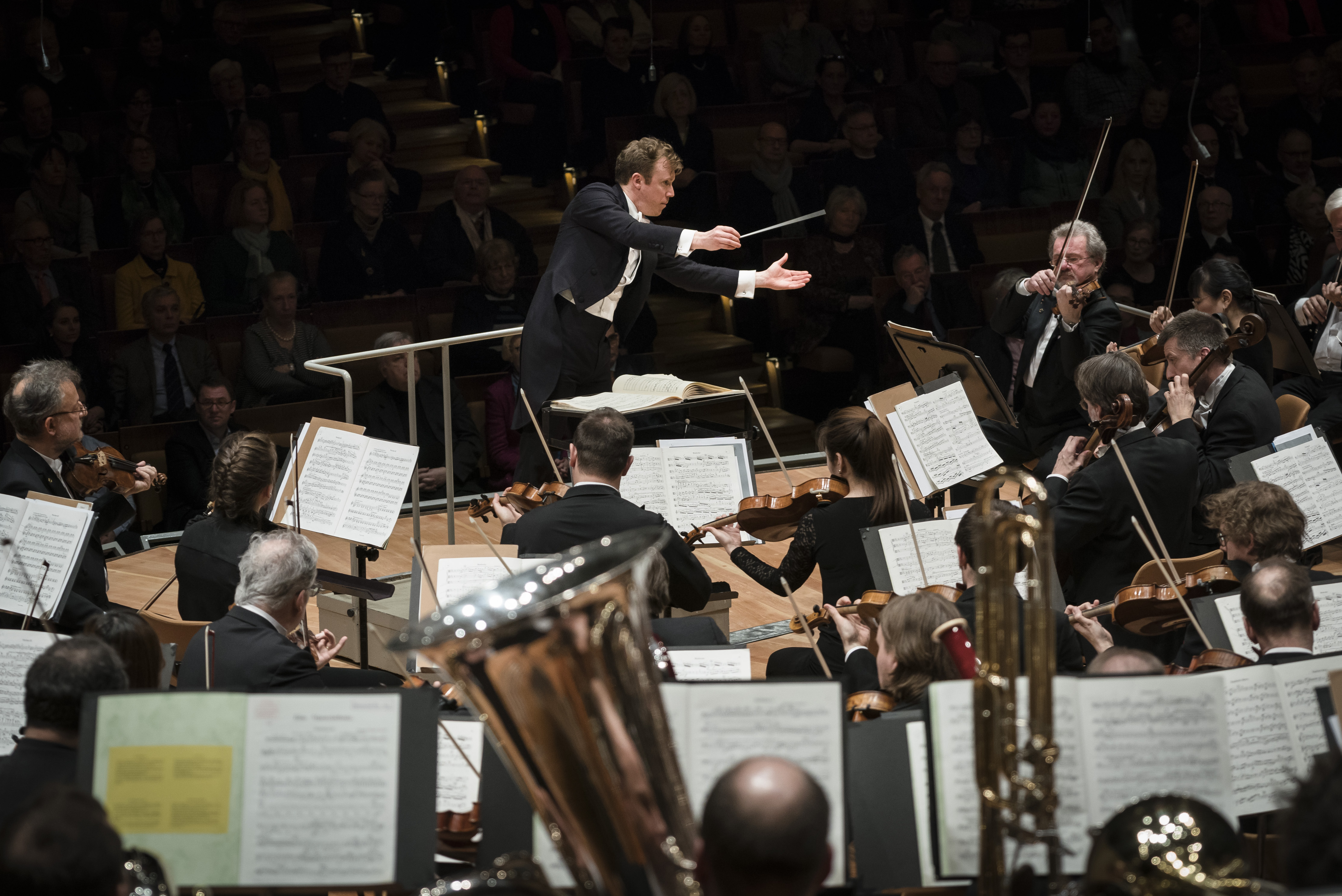
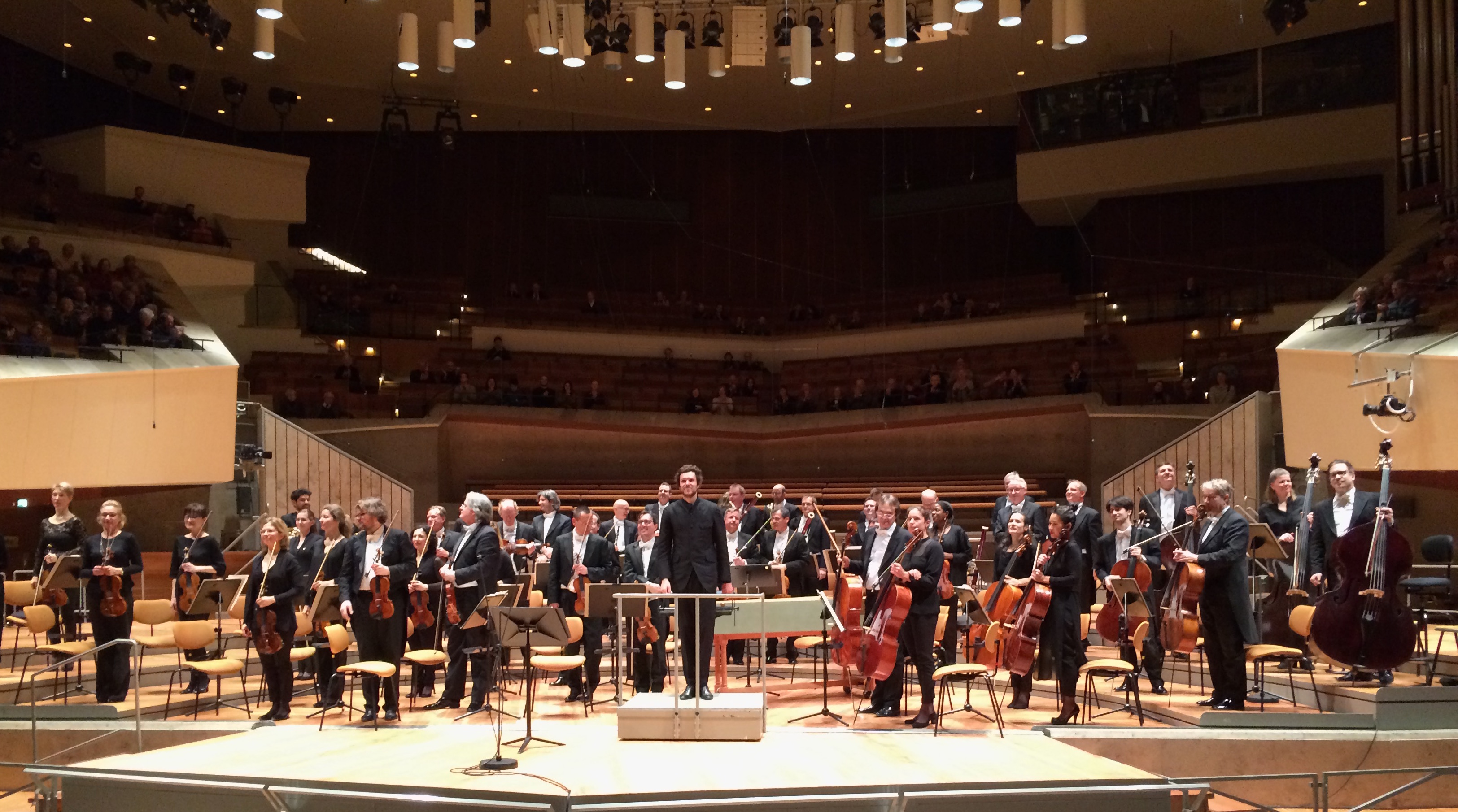
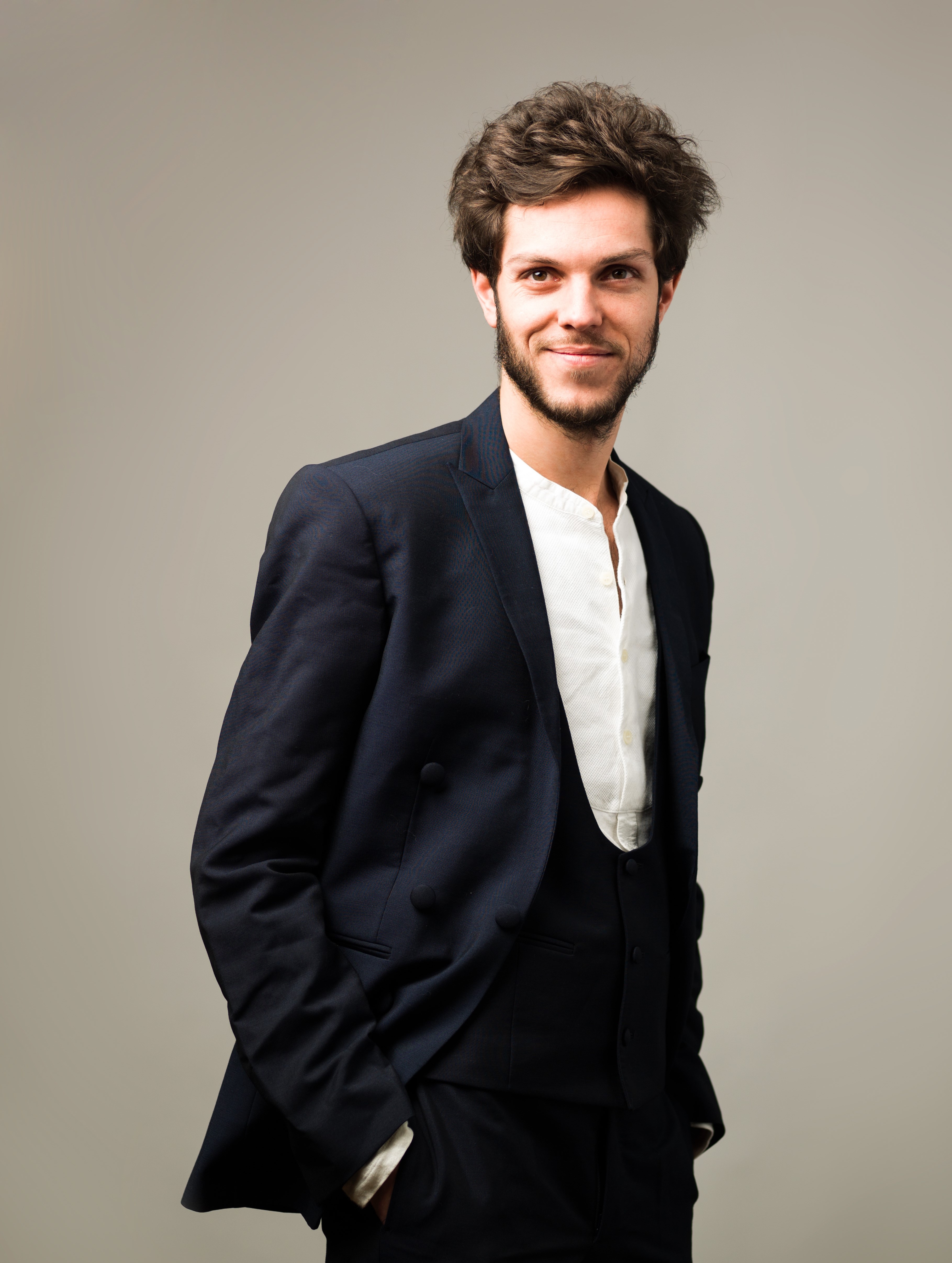




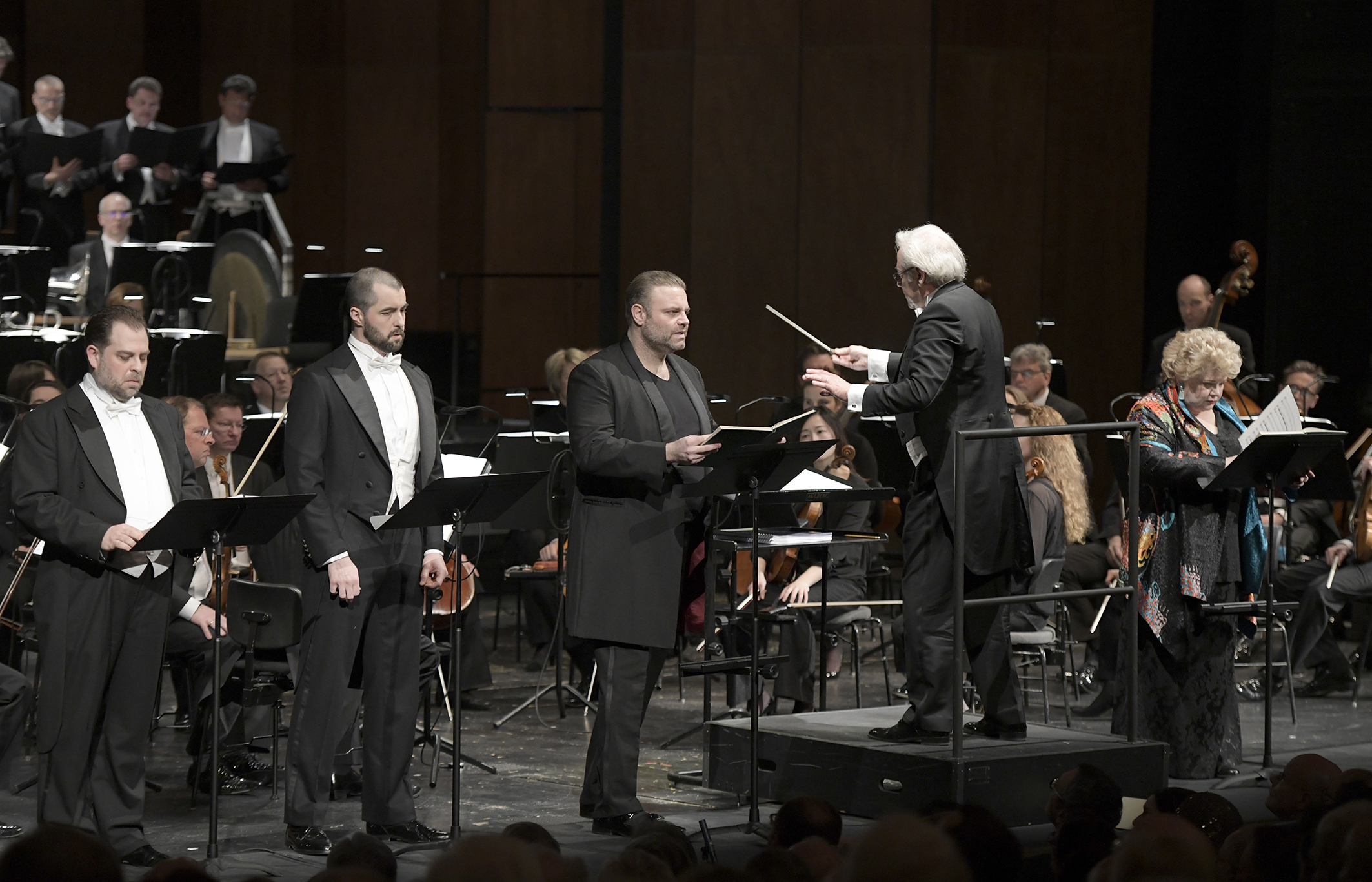

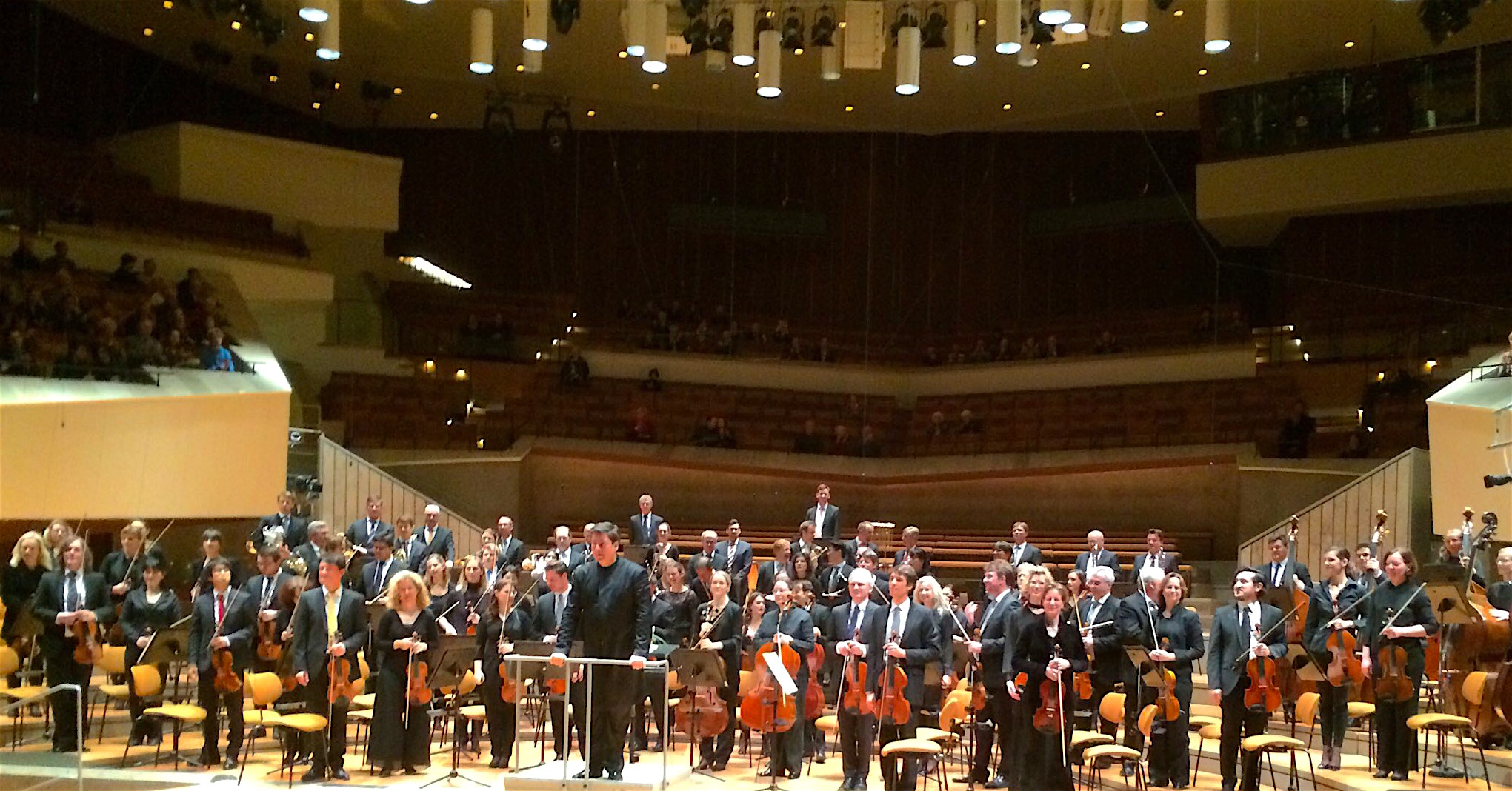

On Stravinsky’s Soldier: “We Have To Safeguard The Things That Matter In Life”
By Catherine Kustanczy
On July 15, 2018
In Canada, classical, Europe, festival, interviews, music
This year’s edition of the Toronto Summer Music Festival has a distinctly Russian flavour.
The festival (initially founded as the the Silver Creek Music Foundation in 2004) opened this past week with a concert by the celebrated Escher Quartet, who performed a program of works which included string quartets by Shostakovich and Tchaikovsky, respectively. The following night, members of the quartet joined pianist Lukas Geniušas and TSMF Artistic Director (and Toronto Symphony Orchestra Concertmaster) Jonathan Crow for “Mother Russia“, a concert featuring the music of Rachmaninoff, Prokofiev, and Shostakovich. Moscow-born pianist Geniušas showed off his considerable technical abilities and a very expressive approach in the (piano-only) first half, his rendering of Rachmaninoff’s Preludes (Op. 32, No. 9-13) a gently modulated collection of lights and colours. Likewise, his work with members of the Escher Quartet, joined by Crow, showed off a considerable lyricism; altogether, the troupe provided a round, even sexy, approach to the jagged angularity of Shostakovich’s Piano Quintet in G minor, Op. 57.
Audiences can look forward to further concerts with Russian works, including a presentation of Stravinsky’s “L’Histoire du Soldat” on July 19th. Composed in 1918 when Stravinsky was facing tough times (including the recent death of his brother and serious financial shortfalls), the piece (“Histoire du soldat lue, jouée et dansée en deux parties” or (Story of the soldier to read, act and dance in two parts”, in full) was written with Charles-Ferdinand Ramuz, a French-Swiss writer who he’d met as a fellow ex-pat in Paris just before the First World War. The work retells the Faust myth using a litany of musical styles and folkoric elements inspired largely by the work of Russian writer Alexander Afanasyev, one of the most famous Russian folkorists of the 19th century, and a big fan of the Grimm brothers’ work as well. Originally intended as a touring work, “L’Histoire du Soldat” has been produced in a variety of styles and iterations, though most commonly with one narrator doing all the roles, with musical accompaniment. Isabel von Karajan (daughter of conductor Herbert von Karajan) performed the work with members of the Berlin Philharmonic to great acclaim in Salzburg in 2011, and then in Berlin in 2012; it’s also been presented with pantomime elements in 2013, recorded with Jean Cocteau and Peter Ustinov in 1962, and, rather poignantly, by Carole Bouquet, Gerard Depardieu, and (deceased) son Guillaume, in the mid 1990s in Paris at the Théâtre des Champs Elysées. Stravinsky may have written “Soldat” out of basic financial necessity, but the work has proven to be a wonderfully enduring piece of music theatre, one that showcases his changeability and elasticity as a octopus-like composer with a multitude of legs moving easily between sometimes wildly varying eras, styles, sounds, and artistic movements.
Canadian music artist Alaina Viau is bringing a new production of the work to the Toronto Summer Music Festival this coming week, featuring dynamic Canadian talent including theatre artist Derek Boyes and choreographer Jennifer Nichols. In her day job, Viau is Assistant Production Manager at the Toronto Symphony Orchestra, but she’s also the founder and Artistic Director of sparky independent company Loose Tea Music Theatre, which specializes in presenting creatively-staged opera in and around the Toronto area. Viau has worked regularly with a variety of artists in various disciplines (including dance music, cinema, and visual art) to present re-imagined productions of opera chestnuts like Bizet’s Carmen and Gounod’s Faust.
The latter is especially relevant to Viau’s work with “L’histoire du Soldat”, but so is her interest in and commitment to social justice issues, especially as they pertain to contemporary presentation within the operatic form. I recently spoke with Viau about why this piece is so timely (and perhaps timeless), her decision in casting the lead role with a woman, and how her work as director of production for the TSMF presentation of Messiaen’s “Quartet for the End of Time” contrasts and complements that with Stravinsky.
Alaina Viau (Photo courtesy Toronto Summer Music Festival)
What’s it like to stage “Soldat” for the first time?
Exciting! I’ve known this piece for a long time and I’m what you’d call a Stravinsky nut! I have a lot of literature on Stravinsky and bought a special edition of Rite of Spring when it came out years ago; I have new book on him, and all his letters and things like that.
How did you come to direct this?
I’d only ever heard it in the way most people hear it, with one person narrating all the roles, and then the ensemble around them. Jonathan Crow and I started talking about this project two years ago — I work for the TSO as well, and the TSO Chamber Soloists (of which Crow is a member) were doing a series of performances of this piece; it was done at Roy Thomson Hall and the Art Gallery of Ontario and at the Hearn (Generating Station), and at that time, it was just with Derek Boyes and the ensemble. It was then that Jonathan and I got talking about how we’ve never seen it fully staged, and what a shame that was, because it was originally written for a touring performance with actors and a set and such, so we said, “Hey we need to see this!”
So TSMF audiences will see a full type of production?
Yes. We have Derek, who is doing the roles of the narrator and the devil — because he does such a great job with the devil! – and we have a dancer/choreographer, Jennifer Nichols. We also decided to cast the role of the soldier as a woman — traditionally it’s a man, but… it’s an all-male show, and Jonathan and I were like, “That’s kind of shitty!” We don’t change the relationships with the fiancee or the princess — it’s any relationship, really. We didn’t feel we needed to harp on that fact; it’s a relationship that exists. I wish I didn’t even have to say that, really. The idea came through conversations on gender parity. There’s a lot of men in the show, and a lot of men in the ensemble, and we were like, “That’s a lot of men on stage! It isn’t fair; I think we can fix this.”
How much were you influenced by what you’d seen and experienced as a Stravinsky fan?
I don’t believe I’ve taken any influences in doing this. I’m sure there are some references to some of the research I’ve done, but what I’ve seen (of Soldat) I haven’t really liked. So that is a thing: I have decided not to do some things. That is an influence of sorts! I knew what I didn’t want. That is sometimes just as strong, if not stronger, than seeing things I do like, so I was able to really think, “Well I want to make this fun, engaging, with great music, and a great story” — it’s a warning story.
… although it can be presented as drily didactic as well. I would imagine as a theatre practitioner you have to be careful not to wave a finger at your audience. “Fun” and “engaging” are the words I’d use to describe what Loose Tea does.
Well it is my style, and my question is always, “Why tell this story now? Why does it matter right now?”
So why “Soldat” now?
It’s a story of being too greedy, of consuming too much, of not being appreciative of what you have. That’s something I think we can always relate back to stuff in the US and what could potentially happen in Canada: we need to be aware of what we have, and not be greedy. We have to safeguard the things that matter in life. What the soldier comes to learn is, in fact, the things that matter are things that money can’t necessarily buy, that there is greater value in having some sort of meaning in life. I think that’s a tale that is always worth telling.
It’s timeless and timely and really elastic, not solely in themes but in presentation possibilities.
Yes, and what I really like is that it’s not a happy ending — he gets the princess and then screws it up again. It’s that reminder that you have to be constantly working on that aspect of yourself.
It’s a wry comment on the nature of humanity also, the nature of which seems very Russian in nature.
That too. The question is, how do you tell this story to a Canadian audience, who may not have that understanding of Russian folklore? That folklore is quite brutal sometimes.
How does your work on “Quartet for the End of Time” complement what you’re doing with “Soldat”?
I get excited about it, really. What I’m particularly enjoying is that I did a Masters degree in music, and it’s really nice to geek out and go back to the score, do my research, do my score study — it really helps me come to important realizations.
For the Messiaen, all I’ve been doing for months is consuming a lot of research, which I love doing, and really trying to think about how Messiaen saw the piece. He had synesthesia, and we wanted to explore not just what he saw but what role this plays overall: why do we care about “Quartet for the End of Time”? Why do we care about the visual aspect of it? And how can we make it make sense to us? Because he was very religious, and in the context of the Toronto Summer Music Festival… religion is not a really strong (theme), it’s not the strongest point to bring out in this piece.
But it’s unmissable in the music.
Yes. Although he wrote it with religion in mind, something that really inspired him, and what I think may inspire many people, is a commonality of hope of this piece.
That sense of hope contrasts with the ending of “Soldat”quite strongly.
It is what got him through his internment in the camp; he couldn’t escape physically, and the more difficult things became physically, the more he escaped into his brain. You hear it in this Quartet — because he did have a strong sense of hope and of things working out, even in an internment camp.
Vision over visibility.
Yes, it’s a good fit with the festival.